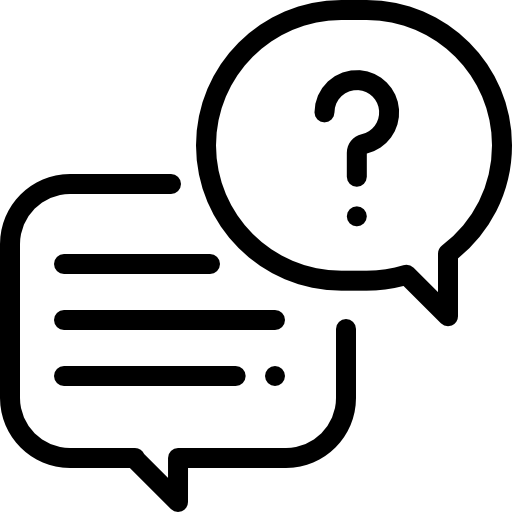20 Trailblazers Leading The Way In Driving License Purchase Procedure
페이지 정보

본문
Navigating the Road to Legality: Understanding the Driving License Acquisition Procedure
In a progressively mobile world, a driving license is more than simply a paper; it's a key to independence, chance, and convenience. It's a testimony to one's capability to operate a vehicle securely and responsibly on public roads. Nevertheless, the term "driving license purchase" is a common misnomer. A driving license is not something you can merely buy; it's made through a structured procedure developed to ensure road security for everybody. This short article aims to demystify the procedure for getting a driving license, outlining the actions, requirements, and important information one requires to browse this vital procedure effectively.

Understanding the right terminology is the first action. Rather of "acquiring," the precise phrase is "obtaining" or "acquiring" a driving license. This process includes showing competence in both theoretical understanding of traffic rules and practical driving abilities. Governments and regulatory bodies worldwide have actually developed standardized procedures to guarantee that only certified individuals are permitted to operate automobiles, thereby decreasing accidents and promoting more secure roads.
The journey to obtaining a driving license generally involves numerous essential stages. While particular guidelines and treatments might vary slightly from nation to country, and even state to state within bigger nations, the core principles stay constant. Let's explore the general structure of the driving license acquisition procedure.
Eligibility Criteria: Setting the Foundation
Before embarking on the application procedure, it's crucial to understand if one meets the basic eligibility criteria. These normally include:
- Age Requirements: Minimum age limitations are strictly enforced and differ depending on the type of car and the governing jurisdiction. Generally, for private cars, the minimum age is 18 years in many countries. For motorcycles or other lorry categories, the age might vary.
- Residency Requirements: Applicants are usually needed to be residents of the jurisdiction where they are applying. Evidence of address, such as energy expenses or government-issued files, might be needed.
- Physical and Mental Fitness: Applicants may require to declare their physical and mental fitness to drive. In many cases, a medical certificate from a registered physician may be required, particularly for older applicants or those with specific medical conditions.
- Understanding of Traffic Rules: An essential understanding of traffic laws, road indications, and safe driving practices is essential. The entire procedure is created to evaluate this understanding.
The Step-by-Step Procedure: A Detailed Guide
Acquiring a driving license is a multi-stage procedure, typically starting with a student's license and culminating in the full, long-term driving license. Here is a breakdown of the typical actions involved:
Obtaining a Learner's Permit/License: This is typically the initial step. The learner's authorization enables individuals to practice driving under guidance. To get a student's license, one typically requires to:
- Complete an application.
- Provide proof of age and identity.
- Pass a vision test to make sure sufficient eyesight.
- Pass a written or computer-based understanding test on traffic rules, policies, and roadway indications. This test assesses the applicant's theoretical understanding of driving.
Practicing Driving: Armed with a student's permit, the next crucial phase is practice. This includes:
- Supervised driving practice: Learner's permits generally mandate driving with a licensed driver who satisfies particular requirements (e.g., holding a full license for a minimum duration).
- Official Driving Education (Optional but Recommended): Enrolling in a driving school offers structured lessons from accredited trainers. Driving schools offer important training in automobile control, traffic maneuvers, and protective driving strategies. While in some cases optional, formal driving education is highly suggested to boost driving skills and enhance the opportunities of passing the driving test.
Setting Up the Driving Test (Practical Test): Once enough practice has been carried out and the applicant feels great, they can schedule the practical driving test. This process normally includes:
- Applying for the driving test: This can typically be done online or by visiting the relevant licensing authority.
- Paying the test cost.
- Picking a test date and time. Schedule may vary, so scheduling in advance is typically advisable.
Appearing for and Passing the Driving Test: This is the critical action. The driving test assesses the applicant's practical driving abilities and their ability to apply traffic guidelines in real-world driving scenarios. The test generally involves:
- Vehicle evaluation: The examiner may examine the vehicle's roadworthiness, ensuring lights, indicators, brakes, and other necessary components are operating correctly.
- Fundamental car control maneuvers: This could consist of beginning and stopping smoothly, equipment changing, turning, reversing, and parking.
- Driving on public roads: The examiner will examine the applicant's ability to browse various roadway conditions, obey traffic signals, preserve proper speed and lane discipline, wykupienie Prawa Jazdy and communicate securely with other roadway users.
- Observation abilities and threat understanding: Demonstrating awareness of surroundings, anticipation of possible dangers, and making safe choices are important aspects examined throughout the test.
License Issuance: Upon successfully passing the driving test, the candidate is generally provided a driving license. The procedure might include:
- Completing last documents.
- Paying the license charge.
- License collection: The license might be provided immediately or sent out by mail, depending on the particular procedures of the licensing authority.
Files Required: Gathering the Essentials
Throughout the driving license acquisition procedure, numerous files are needed. These generally consist of:
- Proof of Age and Identity: Passport, birth certificate, nationwide ID card, or other government-issued recognition documents.
- Evidence of Address: Utility expenses (electrical energy, water, gas), bank declarations, lease agreements, or government-issued address proof.
- Application: Duly filled application kinds for student's permit and driving license, as provided by the licensing authority.
- Medical Certificate (if needed): A certificate from a registered medical professional verifying fitness to drive.
- Passport-sized Photographs: Recent photos as per the specifications of the licensing authority.
- Student's Permit: For the driving test, the legitimate learner's authorization is mandatory.
- Car Documents (for driving test): Registration certificate, insurance certificate, and pollution under control certificate of the car utilized for the driving test.
Tips for Success: Enhancing Your Chances
Obtaining a driving license requires preparation and focus. Here are some practical ideas to increase the chances of success:
- Thoroughly Study Traffic Rules: Familiarize yourself with the traffic laws and regulations of your jurisdiction. Many licensing authorities provide handbooks or online resources.
- Practice Regularly and Systematically: Consistent and structured practice is essential to developing driving skills and self-confidence.
- Seek Professional Driving Instruction: Enrolling in a reputable driving school can significantly improve driving skills and prepare you for the test.
- Comprehend the Test Criteria: Familiarize yourself with the particular criteria and maneuvers that will be examined throughout the driving test.
- Stay Calm and Focused During the Test: Nerves can impact efficiency. Attempt to remain calm, focused, and drive as you have practiced.
- Ask Questions if Unsure: Don't think twice to clarify any doubts you may have with the licensing authority or driving instructor.
Common Mistakes to Avoid: Steer Clear of Pitfalls
Particular typical mistakes can hinder the driving license acquisition process. Knowing these can help prevent unneeded hold-ups or failures:
List of Common Mistakes:
- Insufficient Preparation for the Knowledge Test: Underestimating the importance of studying traffic rules can lead to failing the written test.
- Lack of Adequate Driving Practice: Insufficient practice leads to bad driving abilities and increased chances of failing the practical test.
- Picking the Wrong Vehicle for the Test: Using a vehicle that is unfamiliar or hard to deal with can adversely affect performance.
- Uneasiness and Panic During the Test: Letting nerves get the better of you can lead to mistakes that would otherwise be avoided.
- Overlooking Examiner's Instructions: Failing to thoroughly listen and follow the examiner's directions during the driving test can lead to failure.
- Not Checking Vehicle Documents: Forgetting to bring required lorry documents for the driving test can lead to post ponement or disqualification.
Often Asked Questions (FAQs)
Q: Can I directly obtain an irreversible driving license without a learner's license?
- A: In the majority of jurisdictions, acquiring a learner's license is a mandatory prerequisite before making an application for a permanent driving license. The student's permit period permits for supervised practice and ability development.
Q: How long is a student's license valid for?
- A: The credibility duration of a learner's license differs, normally ranging from a couple of months to a year. It is very important to check the particular credibility duration in your jurisdiction.
Q: What happens if I stop working the driving test?
- A: If you stop working the driving test, you will typically be allowed to retake it after a waiting duration, which might range from a couple of days to a few weeks. You may require to pay the test cost again for each attempt.
Q: Can I use my own automobile for the driving test?
- A: Yes, in many cases, you can use your own lorry for the driving test, provided it fulfills the needed security standards and has legitimate registration, insurance, and pollution certificates. Driving schools also frequently supply vehicles for testing.
Q: Is it obligatory to participate in a driving school?
- A: While not always obligatory, enrolling in a driving school is highly suggested. Professional instruction significantly boosts driving abilities and increases the likelihood of passing the driving test. In some jurisdictions, finishing a driving school course might be compulsory for certain age groups or lorry types.
Q: How long does it take to get a driving license?

- A: The total time can differ depending upon elements such as consultation availability, individual learning speed, and waiting periods for tests. Usually, it can take anywhere from a couple of weeks to a few months to obtain a driving license, from the preliminary student's permit application to final license issuance.
Conclusion: Driving Towards Responsible Mobility
Getting a driving license is a substantial step towards personal mobility and self-reliance. It is a process designed to make sure road safety and accountable driving. By understanding the procedures, fulfilling the requirements, preparing adequately, and practicing vigilantly, individuals can effectively browse the journey to getting a driving license. Keep in mind, a driving license is not just a privilege but likewise an obligation. Safe driving practices, adherence to traffic guidelines, and responsible roadway behavior are vital for producing much safer roadways for everybody. The journey to getting a license marks the beginning of a long-lasting dedication to safe and accountable driving.
- 이전글Why You Should Be Working On This Upvc Windows Doors 25.07.07
- 다음글You'll Never Guess This Can I Buy IELTS Certificate Online's Benefits 25.07.07
댓글목록
등록된 댓글이 없습니다.







